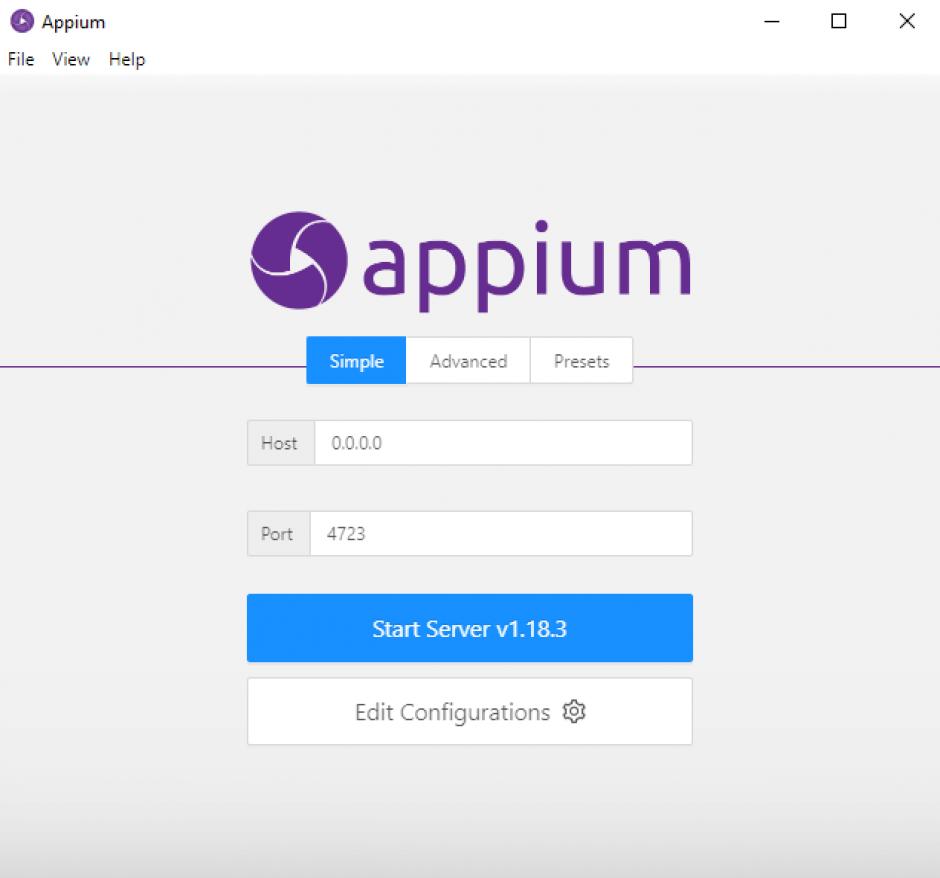

- #Uninstall appium app install#
- #Uninstall appium app android#
- #Uninstall appium app code#
- #Uninstall appium app password#
This capability is only available for iOS versions 9.3 through 11.1. If you explicitly want to use UIA automation, set the automationName to uiAutomation. The default automation method used for iOS is XCUITest. UFT Mobile enables you to run tests on iOS devices without requiring a Mac machine. When working with UFTMhosted devices, the source of the hosted device: HOSTED or UFTM |HOSTED (both). However, if you are testing apps with Node.JS wd, you must add this capability and set it to an empty string. When testing apps, either omit this capability or set it to an empty string. When testing web applications, the browser being tested, such as "Safari" for iOS and "Chrome", "Chromium", or "Browser" for Android. Use this capability in conjunction with or instead of deviceName. If no UDID is specified, the script uses a default device for the specified capabilities. The UDID identifier of the device as assigned by UFTM. (Note the use of backslashes as escape characters.) For example "\"Apple iPhone 5c (GSM+CDMA)\"" will look for a device with that exact manufacturer and model name. To match an exact string, use a refined search with double quotes.If your device name is a sub-string of another device's name, use other capabilities such as udid, to avoid ambiguity.By default, the search engine performs a fuzzy search, returning the first device that matches part of the string, even if it is not the best match.Use these guidelines when specifying a device by its manufacturer, model name, or logical name. Use this capability in conjunction with or instead of udid. If no device name is specified, the script uses a default device for the specified capabilities. You can specify a manufacturer, model, or logical name as it appears in UFT Mobile console. You can specify a enumeration symbol, such as, =, and =. "PrivateOnPremise", "Public", or "PrivateHosting"

For details on simulations, see Appium simulations.
#Uninstall appium app code#
Include this capability when using simulations such as authentication, photo, barcode, and QR code simulation.
#Uninstall appium app install#
Install the packaged version of the app for testing.
#Uninstall appium app android#
The name of the Android activity to be launched, displayed as the Launch activity in the app details card.Ī unique identifier, the Bundle ID of the app, displayed as Package ID in the app details card. If it exists, it installs it automatically before running the test steps. If the app is not already installed on the device, UFT Mobile checks to see if the app exists in the database. The package name that identifies the app, displayed as Package ID in the app details card. To use Appium version 2 set this capability to v2.x.įor code samples of switching between Appium versions, see multi-Appium support in the UFTM github repository. To install an app on a device, use appPackage and appActivity for Android, and bundleId for iOS.ĭefines the Appium major version to use for your test. The default shared space ID is 999999999. For details, see Connect to a UFT Mobile shared space. You can find this in the toolbar of the Lab Console. When working with shared spaces enabled, include the nine-digit shared space ID. * See comments by oauthClientId/ userName. Administrators can enable anonymous access in the General section of the Administration Settings screen.
#Uninstall appium app password#
* If your administrator allowed anonymous logins for Appium scripts, you can leave out the oauthClientId/ userName and oauthClientSecret/ password capabilities. Appium/ UFTM capabilityĪn Execution type access key/ user name that is needed to run tests in UFT Mobile.įor details on access keys, see Generate and manage access keys (non shared space admin users). Example: For userName, use uftm:userName.


 0 kommentar(er)
0 kommentar(er)
